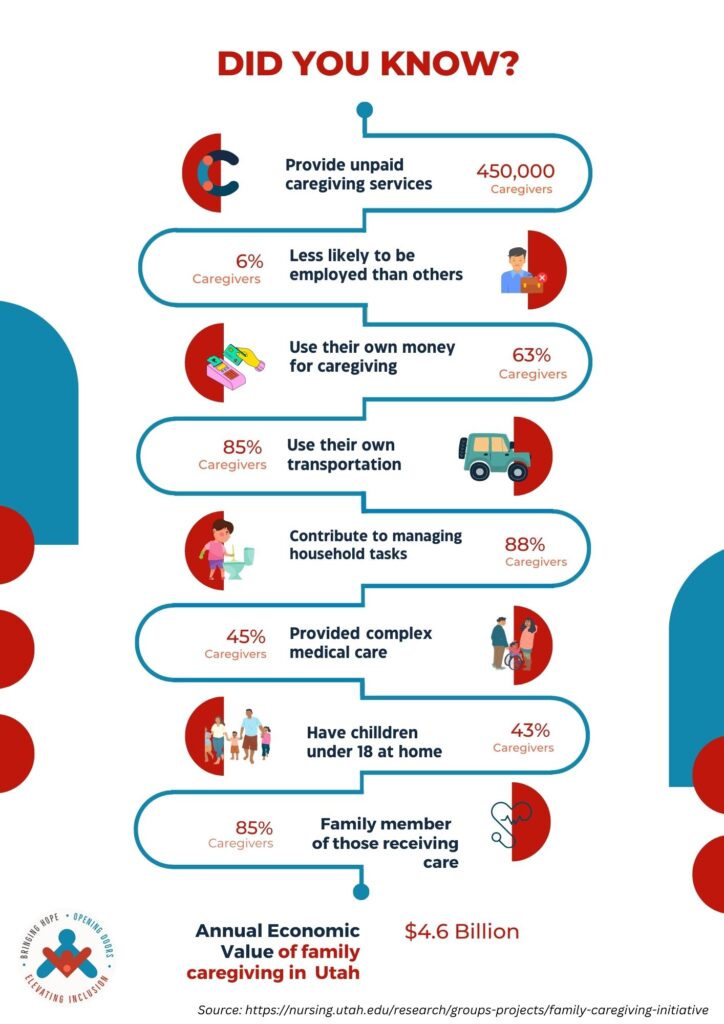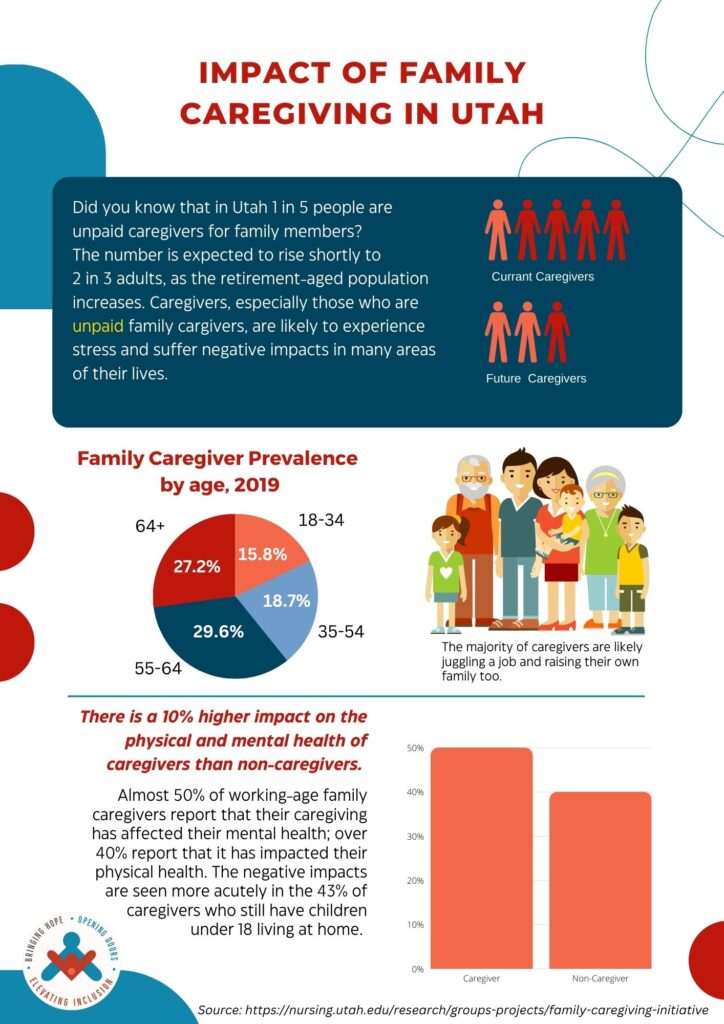
How Caregiving Impacts Utah Families
Did you know that 1 in 5 Utahns are unpaid caregivers for family members? And did you know that this number is expected to rise in the near future to 2 in 3 adults, as the retirement-aged population increases? This has a significant impact on Utah’s families and economy. Caregivers, especially those who are unpaid family caregivers, are likely to experience multiple stresses and suffer negative effects in many areas of their lives.
Emotional Impacts: Almost 50% of working-age family caregivers report that their caregiving has affected their mental health; over 40% report that it has impacted their physical health. (This is 10% higher overall than their non-caregiving peers). The negative impacts are seen more acutely in the 43% of caregivers who still have children under 18 living at home.
Physical Impacts: The majority (53.5%) of family caregivers are OVER 55. This means that they are likely to be caring for their family members while experiencing healthcare needs themselves. In the 35-55 age group,1 in 5 are also unpaid caregivers. This usually comes at a time in their lives when they are often employed in other work and raising their own families, which means added demands on their time and energy.
Financial Impacts: Unpaid Caregiving impacts the caregiver’s finances in a number of ways. First, in lost wages: Utah’s caregivers are 6% less likely to be employed than working-age adults who aren’t caregivers. These lost wages have been estimated to equal 1 Billion dollars annually. And a significant portion (1 in 3) of working-age adults overall are giving unpaid care, whether or not they have paid employment. In addition, many caregivers shoulder additional costs related to their caregiving: 63% report having used their own money to help; 85% have provided transportation; and 88% contribute to managing household tasks.
Social Impacts: The time and energy required of caregivers–in addition to other family responsibilities, or other service and employment demands– can cause feelings of isolation, as social opportunities are sacrificed. This often increases feelings of stress–which 66% of unpaid caregivers report. Statistically speaking, the average profile of an unpaid caregiver in Utah is a 59-year old woman, caring for a 76-year old family member, while also working full or part-time.

A HUGE IMPACT
The widespread impact of family caregiving is seen in the following figures:
- 84.7% of UT caregivers are a family member of those receiving care 43% of UT caregivers still have children under 18 at home 450,000 Utahns provide unpaid caregiving services.
- 35,000 of these do so for 40+ hours/week; 1 in 3 have done this for 5 years or longer.
- The economic value of this caregiving was estimated to be 4.6 Billion Dollars for 2019.
Sources:
- “Utah’s Invisible Workforce” (October 2022). Retrieved from https://gardner.utah.edu/wp-content/uploads/Family-Caregivers-FCC-Oct2022.pdf
- “Utah Caregiver Report” (September 2022). Retrieved from https://nursing.utahhealth.acsitefactory.com/sites/g/files/zrelqx146/files/media/documents/2022/Utah%20Caregiver%20Report_2022_DIGITAL.pdf
- “Utah Family Caregiving Policy Priorities” (October 2021). Retrieved from https://nursing.utah.edu/sites/g/files/zrelqx146/files/media/documents/2021/FCC_caregiving_survey_2021_Final.pdf
- “Utah Family Caregiving Fact Sheet” (September 2021). Retrieved from https://gardner.utah.edu/wp-content/uploads/Caregiver-FS-Sep2021.pdf?x71849







